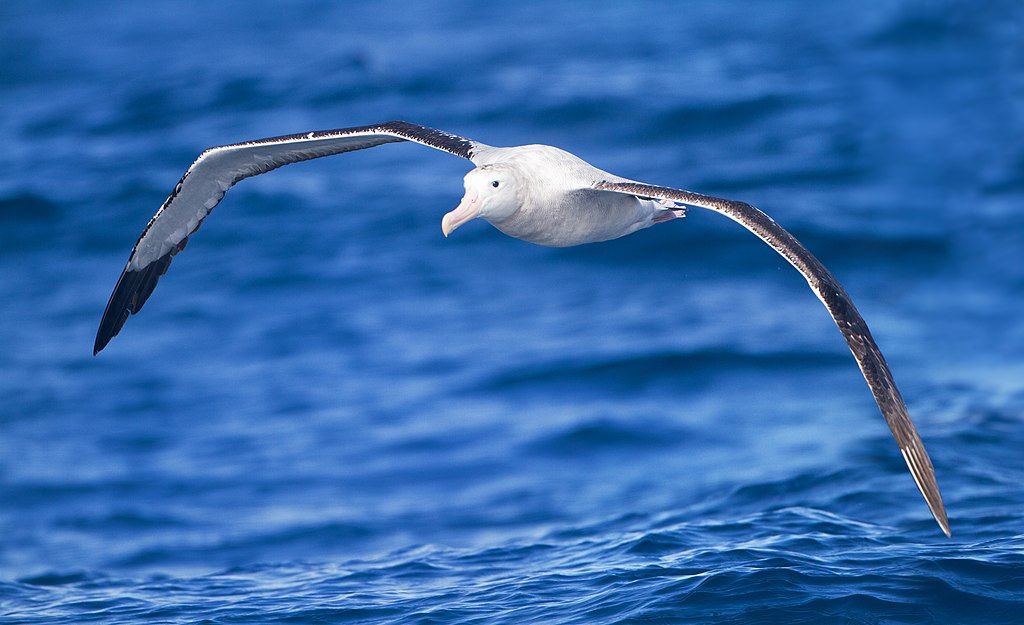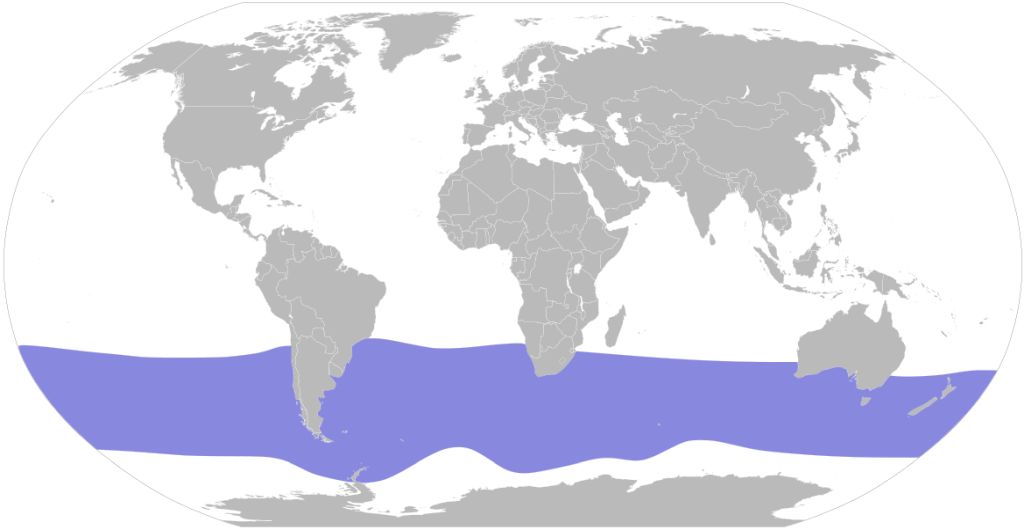
17 October 2023
Like elephants, albatrosses can hear low frequency sounds below our range of hearing, a skill that’s very useful for their lifestyle.
Wandering albatrosses (Diomedea exulans) spend their lives making incredibly long journeys over the ocean. They are known to circumnavigate the Southern Ocean three times in one year, a distance of more than 75,000 miles (120,000 km).

To do this with the least amount of effort, they have the longest wingspan of any living bird — 8 to 12 feet (2.5 to 3.66m) — and use the wind to glide as much as possible.
The best gliding happens at updrafts over the water and the best updrafts are caused by large waves. So how do wandering albatrosses find those large waves? They hear them from very far away, possibly 1,000 miles.
According to Science Magazine, “Big waves produce a very low frequency sound, below 20 hertz, that can travel thousands of kilometers, particularly when they collide with long distance swells, such as when storms develop.”
Would an albatross approach or avoid these waves in the Southern Ocean?
To figure out how the birds choose where to go, Samantha Patrick of University of Liverpool and her team tagged 89 albatrosses with GPS trackers at their breeding grounds on Crozet Island near Antarctica. When the birds returned a year later to breed again, researchers retrieved the tags and analyzed the data.
Geophysicists on the team combined the biologger recordings with infrasound monitoring data from Kerguelen Island in the Southern Ocean to build “soundscape” maps on the birds’ journeys. …
During their long-distance flights, the birds tended to change course whenever they encountered a loud infrasound, the team reports. The infrasounds often indicate wave turbulence, even storms—though it’s not yet clear how the birds make use of this information. The infrasound clearly impacted the birds’ behavior, although the scientists couldn’t identify a clear pattern of whether they avoided or aimed for these low frequencies.
— Science Magazine: ‘Voice of the sea’ may help albatrosses catch the perfect wind
We don’t know yet if they avoid or approach turbulent areas but we know they hear them. More study needed!

Read more in Science Magazine: ‘Voice of the sea’ may help albatrosses catch the perfect wind.
(photos from Wikimedia Commons, video from YouTube; click on the captions to see the originals)